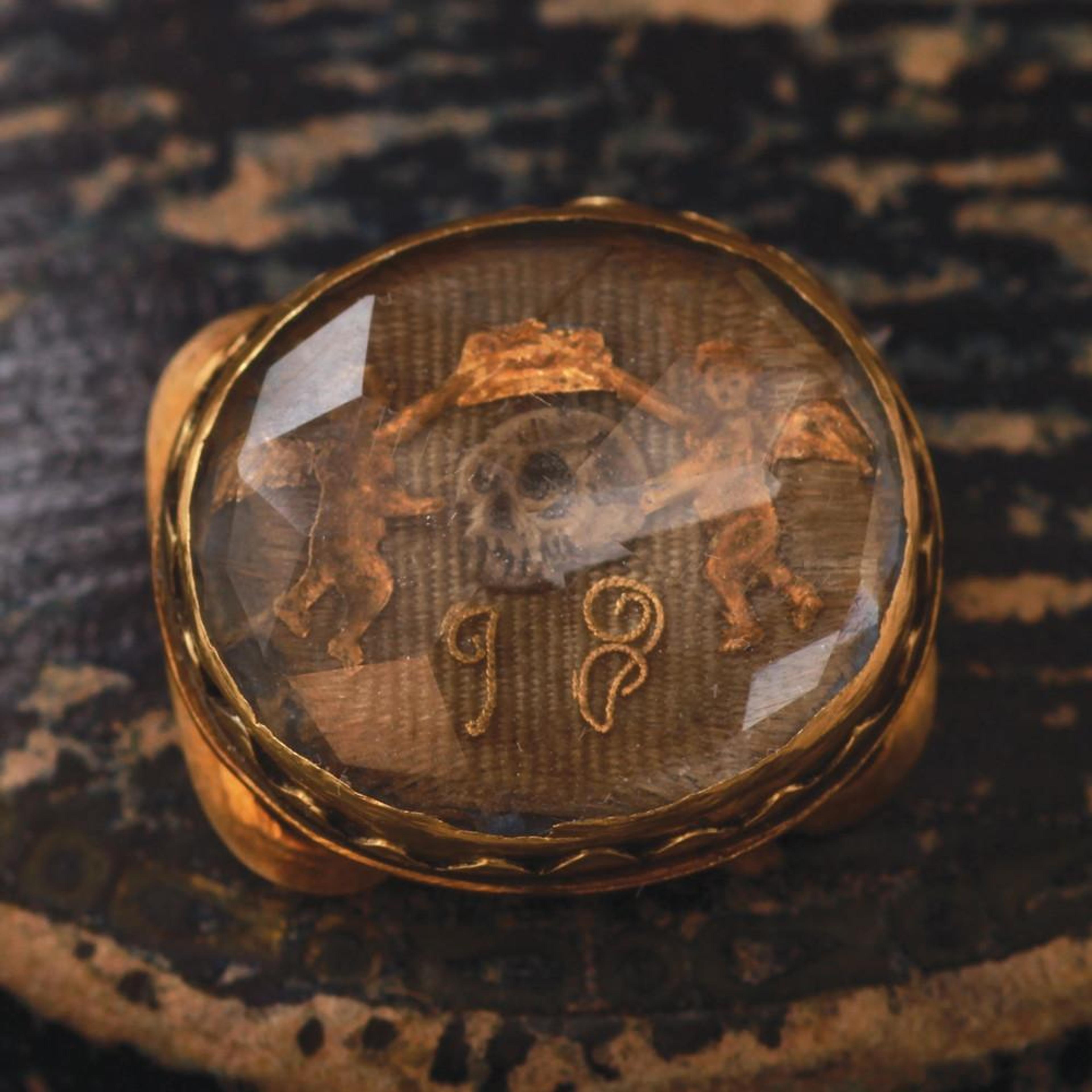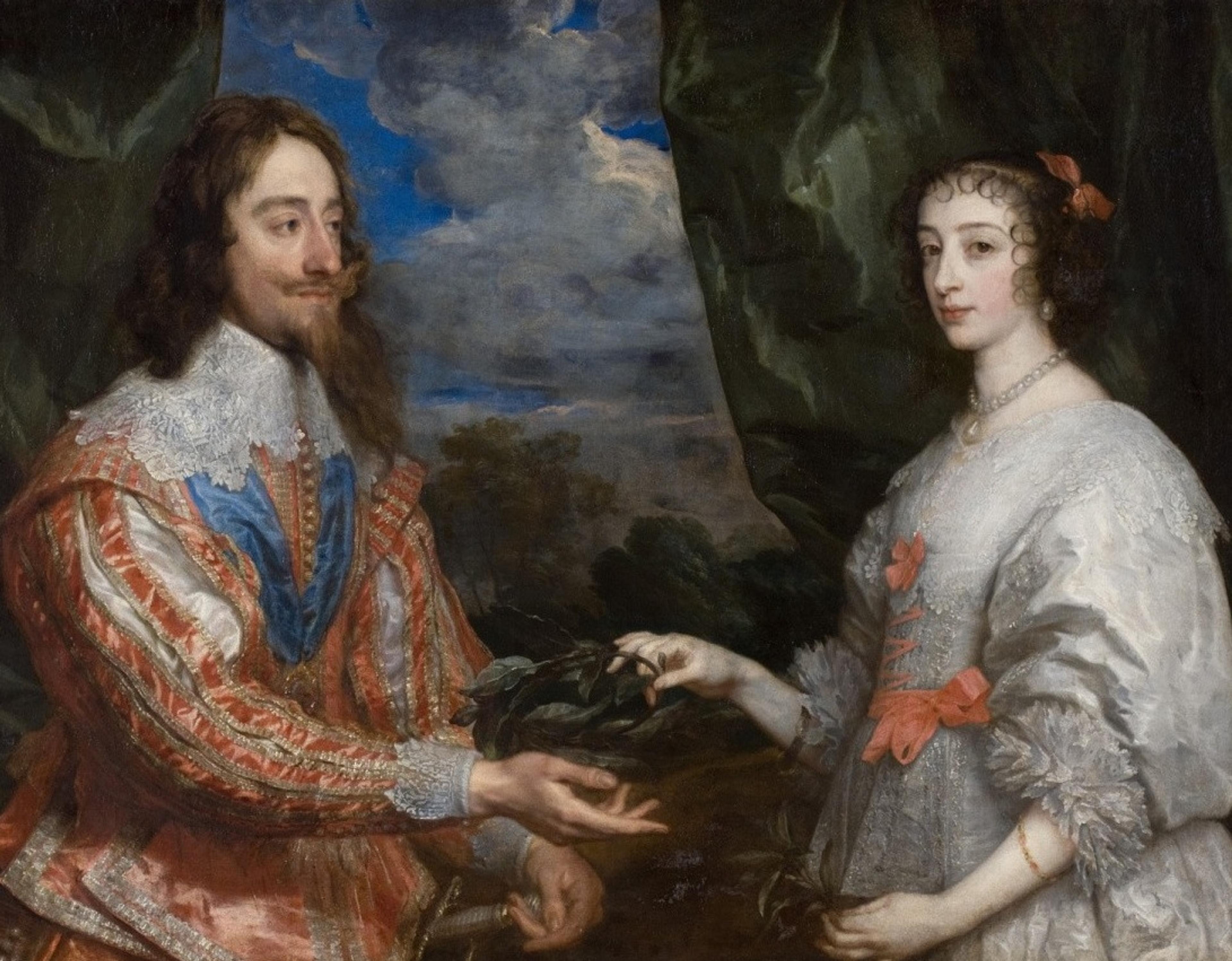
In the late 17th century, a ribbon slide such as this one would have been worn as a bracelet or in the hair. The existence of memento mori and mourning jewelry predate this c. 1690 slide, but tribute jewels such this as mark the beginning of the business of mourning jewelry and the rise in popularity of elaborate hair work. This piece follows in the tradition of Stuart crystal, which was originally worn by loyalists to the Stuart monarchy after the the execution of King Charles in 1649. Made toward the end of the 17th century, it was created in memory of a man (or woman) not the king. The slide features a background of simply woven hair, two cherubs jointly holding a crown above a skull (which symbolizes a connection to royalty), and a gold cipher reading "IF".
thedetails
- Materials
9k gold, rose cut rock crystal, hair
- Age
c. 1690
- Condition
Excellent
- Size
1.7cm x 1.5cm
Need more photos?
Send us an email to request photos of this piece on a model.

Aboutthe
StuartEra
1603 — 1714
A new era dawned when Queen Elizabeth — the last Tudor monarch — died without an heir. The monarchy was temporarily displaced by the Commonwealth of England from 1649 to 1660 by Oliver Cromwell, but was restored — aka "The Restoration" — as Charles II was invited to take the throne. His father, Charles I, had been beheaded in 1649, and most of the jewelry we see from this period was at least stylistically related to this controversial political event. During this time, discoveries and innovations transformed England and Scotland, which were conjoined after a long period of feuding. Coffee became a new trendy beverage, with 600 coffeehouses in London all catering to a different type of clientele. This imported novelty beverage was possible because of the UK's rapidly expanding worldwide trade network. Not yet interested in acquiring territories, the island nation focused instead on making a fortune exporting wool and importing goods like slaves, sugar, and tea. Everyone (except the enslaved people, of course) benefited from the new merchant class that arose, and in the process the Royal Navy became the most powerful in the world. The look of London changed, too — after the Great Fire of 1666, Christopher Wren was hired to rebuild the city's damaged churches, with his greatest accomplishment being St. Paul's Cathedral.